Last Updated on June 11, 2024
There’s a lot of attention paid to weekend box office numbers, even by movie fans who have no financial investment in how successful a movie is or isn’t. What was number one for the weekend? How much does a movie’s box office drop from week to week? But just because a movie rakes in the cash, that doesn’t necessarily mean it’s going to be an enduring classic. And if a movie flops, that doesn’t mean it’s going to be forgotten. Take for example the movie we’re looking at in this episode of Revisited: Big Trouble in Little China. Today it’s considered to be one of the most entertaining action comedies ever made. But when it was released in 1986, it was a disaster.
SET-UP: As the character Egg Shen says at the beginning of Big Trouble in Little China, major events always begin with something very small. The story of this film began when Gary Goldman went to see Tsui Hark’s directorial debut The Butterfly Murders, an odd movie that blended the Chinese wuxia genre with the style of Italian giallos, then added in killer butterfly attack sequences. Goldman exited the theatre inspired to write a story that would mix Asian mystical martial arts with another genre; the Hollywood Western. The first screenplay written by Goldman and his friend David Z. Weinstein, the script that would become known as Big Trouble in Little China was originally set in the Old West. It centered on a cowboy named Wiley Prescott, who provided buffalo meat to the Chinese immigrants building the transcontinental railroad. After making a delivery, Wiley would stay and hang out with the railroad workers for a while, befriending a man named Sun. He ends up accompanying Sun to the San Francisco docks to meet with Sun’s fiancée Lotus, who is just arriving from China… but before Sun and Lotus can be reunited, she’s kidnapped by a gang working for the sorcerer Lo Pan. Lo Pan was cursed to walk the earth as a ghost a couple thousand years ago, and he believes that he’ll be able to break this curse and regain his body by marrying Lotus himself. In the midst of Lotus’s abduction, Wiley also loses his horse to the villain’s gang. So now Sun and Wiley both have reason to enter the magical underworld hidden beneath Chinatown and confront Lo Pan: Sun wants his fiancée back, and Wiley wants his horse back.
Goldman and Weinstein managed to sell their martial arts Western to 20th Century Fox, and did the standard rewrite for the studio. Fred Schepisi, director of Six Degrees of Separation and the Steve Martin movie Roxanne, showed interest in directing the film, but didn’t sign on. The project was offered to Walter Hill, the director of The Warriors and 48 Hrs., but he passed on it, apparently because he couldn’t see himself dealing with the mystical elements of the story. After Hill turned them down, the studio started rethinking the script. They took it from Goldman and Weinstein and put out a call for a writer who could guide the story in a different direction. Enter W.D. Richter, who had written the 1978 version of Invasion of the Body Snatchers and had just made his directorial debut with The Adventures of Buckaroo Banzai Across the 8th Dimension. Richter liked the basics of the story, but thought that asking the audience to take two steps out of their own reality was too much. You could give them a Western or a magical martial arts movie, but not both at once. So he suggested bringing the story into the 1980s, saving the studio the trouble of having to build Old West sets. Fox loved that suggestion.
With Richter’s rewrite, cowboy Wiley Prescott became truck driver Jack Burton, who hauls pigs into San Francisco’s Chinatown in a big rig known as the Pork Chop Express. The Chinese local Jack befriends is named Wang Chi, and he’s meeting his fiancée Miao Yin at the airport instead of at the docks. Lo Pan’s gang abducts Miao Yin, and in the ensuing madness – which includes a battle between rival gangs the Chang Sings and the Wing Kongs – Jack loses his truck. So he and Wang infiltrate the mystical underworld in search of Miao Yin and his vehicle. While modernizing the story, Richter also re-envisioned the lead character. Wiley Prescott had been your typical Western hero; capable, tough, a sharpshooter. Jack Burton talks like he’s tough and capable, he thinks he is your typical hero… but he’s actually a bumbling fool. Richter’s idea was to center the story on someone who doesn’t realize he’s the sidekick. Jack is completely out of his element and always confused as to what’s going on around him, while Wang is a skilled martial artist who understands the magic surrounding them. Richter also changed the tone of the story, giving it a strong comedic element.
Pleased with Richter’s script, Fox went looking for someone to take the helm again, and this time ended up choosing director John Carpenter. Best known for working on horror films like the hit Halloween and the box office failure The Thing, Carpenter was looking good to studios at the time because he had just directed Jeff Bridges to an Oscar nomination in the sci-fi romance Starman. Carpenter was a fan of martial arts films and he enjoyed Richter’s script, which he described as being “absolute nutball”, so he signed on to direct Big Trouble in Little China – and suddenly found himself in competition with a project he was offered and turned down, Paramount Pictures’ new Eddie Murphy movie The Golden Child. Another comedic action movie that dealt with Chinese mysticism. Fox put their movie on the fast track so they could beat The Golden Child into theatres – and Big Trouble in Little China did end up being released five months before Paramount’s movie.
Given a fifteen week shooting schedule and a budget of twenty-three million dollars, Carpenter began assembling his cast.
The director’s top choice to play Jack Burton was Kurt Russell, who he had previously worked with on Elvis, Escape from New York, and The Thing. Russell was initially reluctant to take the job because he didn’t think he could bring anything interesting to the role, but Carpenter convinced him to get involved. Russell would end up having a lot of fun subverting expectations and making Jack look foolish. Carpenter didn’t get his first choice for the movie’s more competent hero, Wang Chi. His suggestion of casting Jackie Chan was vetoed by a producer who feared that Chan’s English wasn’t good enough. It all turned out well, because the role went to Dennis Dun, who proved to be a great Wang Chi. Some trivia sources will tell you that Dun didn’t have martial arts experience before being cast in this movie, but that’s not accurate. He wasn’t an expert, but he had dabbled here and there.
The legendary and incredibly prolific James Hong was cast as the supernatural villain Lo Pan, with Suzee Pai as Miao Yin, who seems to be the green-eyed girl who can break Lo Pan’s curse. The role of Lo Pan’s rival Egg Shen went to Victor Wong, Kim Cattrall was cast as Gracie Law, an ally to Jack and Wang who becomes Jack’s pseudo love interest. Kate Burton and Donald Li fill the roles of a couple other allies, and Carter Wong, James Pax, and Peter Kwong were given standout roles as three characters whose appearance was inspired by three straw-hat-wearing assassins in Lone Wolf and Cub. The characters here are the Three Storms, Thunder, Lightning, and Rain, whose style and ability to control elements helped inspire the creation of the lightning-tossing god Raiden in Mortal Kombat.
The studio had wanted Clint Eastwood or Jack Nicholson to play Jack Burton. They were also uncertain about Kim Cattrall, because she was mainly known for Police Academy and Porky’s at the time. Carpenter said Richter didn’t seem to like Cattrall and tried to rewrite her character after seeing her in rehearsals, so Carpenter told him to stop coming to rehearsals. Anyone who questioned these casting decisions was incorrect, because the perfect actor was chosen for every single role in this movie.
REVIEW: Russell has played some iconic characters in his career, and Jack Burton ranks up there as one of his best, if not the best. With his John Wayne swagger and his way of dispensing wisdom over his truck’s CB radio, he seems like he’ll be able to solve everyone’s problems very easily. But while he’s up for the challenge, he’s not very successful. When faced with martial artists and supernatural beings, he barely knows how to react, let alone how to fight back – and he is taken out of fights on multiple occasions. He misses out on one battle because he accidentally tosses his knife across the room. He accidentally knocks himself out at the start of another, and when he is able to join ends up trapped under the body of an enemy. The idea of Jack unknowingly being the sidekick instead of the heroic lead was in Richter’s script, but Carpenter and Russell pushed it even further when they were on set. It was Russell’s suggestion that Jack should knock himself out. He also suggested that Jack get lipstick on his mouth after kissing Gracie Law and then leave the lipstick there through the following very important scene. He took every opportunity to lower Jack’s cool factor, he loved doing that. This is especially evident in the way he plays the character when he goes undercover to look for the abducted Miao Yin at a brothel. As Russell put it, Jack “falls on his ass as much as he comes through. He’s a lot of hot air, very self-assured, a screw-up”.
While Jack is being mostly counted out, other characters are helping Carpenter show off the fact that he was just as adept at making a martial arts action movie as he was at making horror or sci-fi. The fight scenes choreographed by James Lew are a lot of fun, well shot and cut together, and performed well by all of the fighters. As usual, Carpenter composed the score for his movie, in association with his frequent collaborator Alan Howarth, and they paired the impressive visuals with some really cool music. Carpenter and the Coupe de Villes, the band he had with director friends Tommy Lee Wallace and Nick Castle, also performed a goofy title song that plays over the end credits. They shot a video for this song that even got play on MTV, back when it was a music channel.
As the film goes on and the characters descend deeper into the underworld, the movie gets weirder. In addition to the standard kicking and punching, shooting and slashing, some of the characters are able to fly through the air in Chinese martial arts movie fashion. Lightning gets tossed around. And not only do Lo Pan and Egg Shen engage in a fight that’s like a mystical laser show, but we even get actual monsters in here. There’s a furry beast that’s meant to be a “Chinese Wildman” or Yeren, a version of Bigfoot. There’s also a floating head with eyeballs all over it. Jack thought it was crazy when he saw the Three Storms and Lo Pan. The sight of this eyeball creature nearly breaks his brain.
Since this is an ‘80s movie, those creature effects are practical, and the eyeball creature was quite a challenge for the effects department. It took over sixty artists and engineers to bring this wacky thing to life; it was an animatronic puppet that had multiple puppeteers controlling it while it was shot with a specially-designed matting system. The effects company had just under two million dollars to work with on the whole movie, and a hundred thousand of those dollars went into the creation of the eyeball creature. It was worth it. It’s an unforgettable sight.
Goldman and Weinstein gave Big Trouble in Little China a great foundation with their basic concept, and it probably would have been fun to see the martial arts and Western genres get mixed together, but the final script we got from Richter is gold. It gifted the world with Jack Burton, and features some wonderful, amusing dialogue. Carpenter had fun letting the actors bounce that dialogue off of each other at a rapid pace, like something out of films made by his hero Howard Hawks, and there are many times throughout where the lines and their deliveries are hilarious. Through the brilliance of Hong’s performance and the strangeness of Richter’s script, some of the laughs even come from Lo Pan, who is both a super-powered, intimidating sorcerer and a funny little old man.
If you ever feel like you can’t keep up with the exposition or don’t have a firm grasp on the rules of Lo Pan’s predicament, that’s okay, that just puts you on the same level as Jack Burton. He doesn’t get this stuff either, but he goes with the flow. So just sit back and enjoy watching all of the madness play out.
LEGACY/NOW: Carpenter had free rein to make exactly the movie he wanted to make… until he was in post-production. Big Trouble in Little China was moving toward release so quickly, the post-production process only took four months. But those four months were hellish for Carpenter. Goldman and Weinstein had envisioned their original script being turned into something along the lines of Raiders of the Lost Ark, and that’s exactly what Fox wanted. They were hoping Carpenter would be giving them the next Indiana Jones and, well… Jack Burton may see himself as being Indiana Jones, but he’s just not on that level. Fox CEO Barry Diller was baffled. He thought Jack was supposed to be the hero of the movie, but aside from his reflexes he wasn’t very impressive. Diller told Carpenter, “I don’t think the things Jack does are that good.” How could they fix this mistake? Diller demanded that Carpenter shoot a new opening scene for the movie that would help build up Jack’s heroism. That’s why the movie begins with a two minute scene in which Egg Shen talks to a lawyer about the events we’re about to see, and during this conversation Egg is very complimentary toward Jack, saying he showed great courage and the people are in his debt. He might as well be speaking directly to the audience, assuring them, “You might think this guy is an idiot, but trust me, he is heroic.”
Fox also felt Carpenter had made the film too humorous. At one point, he was told to cut out as much of the comedy as he could… and after the studio held a test screening for the less humorous cut, they told him to put the comedy back in. Carpenter has called his struggle with Fox over the movie’s tone “an odd, unpleasant experience” that really soured him on the idea of working with major studios – and that wasn’t the only trouble the project was dealing with at the time. The studio also wasn’t planning to give Goldman and Weinstein credit for writing the initial screenplay. In their press releases and on the title page of the script, Richter was the only writer mentioned. Goldman and Weinstein complained to the Writers Guild, and apparently the arbitration process took a while, long enough that Carpenter complained about it in an interview, saying it was “annoying as hell”. Carpenter had seen the original script and was not a fan, saying it was “outrageously unreadable” and would have been “unfilmable”. The movie he shot was written by Richter. The Writers Guild decided how to list the credits the week before Big Trouble in Little China was scheduled to reach theatres. Goldman and Weinstein would receive the “Written by” credit, while Richter would be credited as writing an adaptation of their work.
At the time, Goldman and Weinstein were not pleased that their script had been rewritten or that the tone had been changed. When Goldman was hired to work on Paul Verhoeven’s Total Recall a few years later, he even used the job as an opportunity to get some revenge, writing a particularly nasty demise for a villain named Richter. But as the years have gone by, the writers have learned to enjoy Big Trouble in Little China for what it is instead of being disappointed that it isn’t what they imagined it could be.
Carpenter’s cut of the film scored very highly with test screening audiences, and journalists working the press junket were convinced it was going to be one of the biggest movies of the year. But its own studio still didn’t know what to do with it. The marketing campaign was half-hearted and didn’t sell the movie very well, and Russell has said that he was told the executives had decided to bury it. Fox wanted to cut their losses and focus on James Cameron’s Aliens, which they were going to be releasing just two weeks after Big Trouble in Little China.
The movie was released on Wednesday, July 2nd, 1986… but movie-goers didn’t turn out to see it that Fourth of July weekend. While The Karate Kid Part II, Top Gun, and Ferris Bueller’s Day Off stayed in the top ten after multiple weeks in release, Big Trouble in Little China opened at number twelve. Its final box office haul was only eleven million, well below its twenty-three million dollar budget. But its failure on the big screen didn’t matter when the movie reached video and cable. That’s where it found its appreciative audience and quickly became a cult hit. The movie has had a devoted and growing fan base for almost forty years now, proving that the approach Carpenter took to the material was absolutely the right way to tell this story.
Big Trouble in Little China has been embraced after being misunderstood and underseen when it was first released, the same as what happened with the previous Carpenter and Russell collaboration, The Thing. When you have someone like Dwayne “The Rock” Johnson hoping to cash in on the Big Trouble in Little China property by starring in some kind of follow-up and the makers of Thor: Ragnarok directly referencing it as an influence, it’s clear that Carpenter’s film was a hit in the long run. Hopefully he feels the struggle was worth it, because this was a great movie that more people should have seen in 1986. A lot of people have seen it by now, and it still holds up. It’s awesome.
So you know what ol’ Jack Burton always says at a time like this?






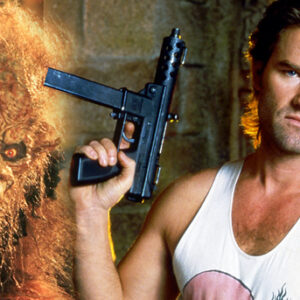
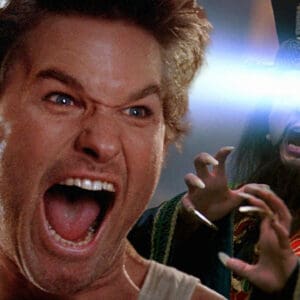
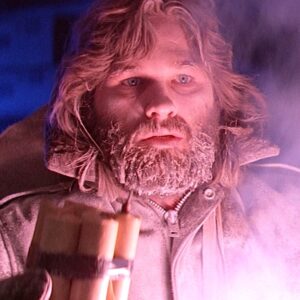
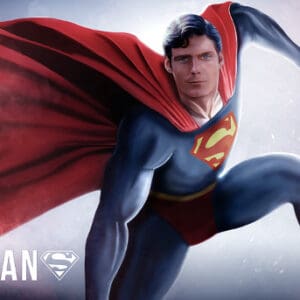
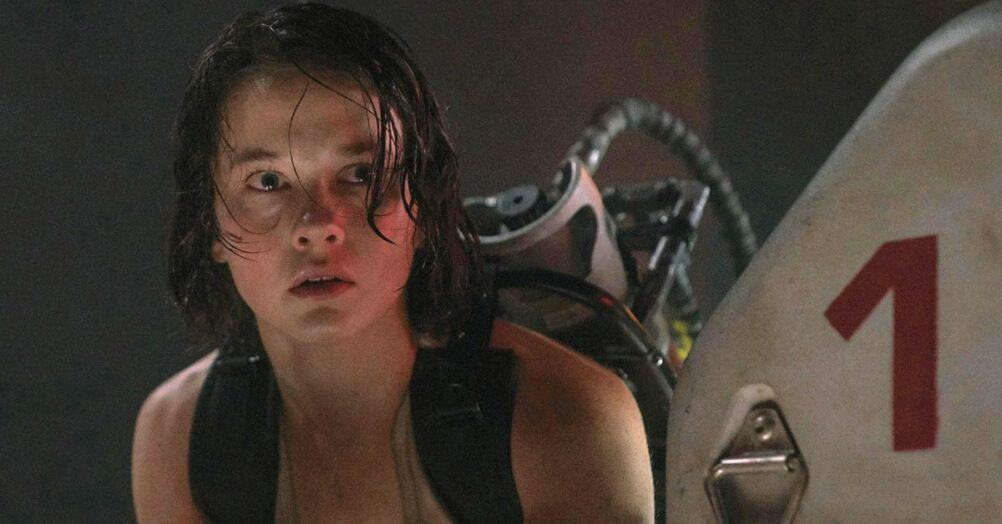


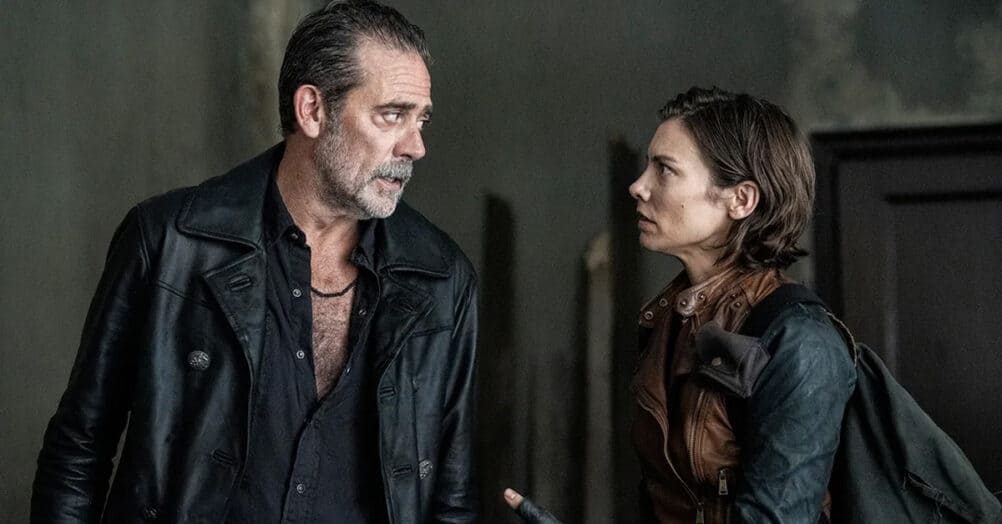
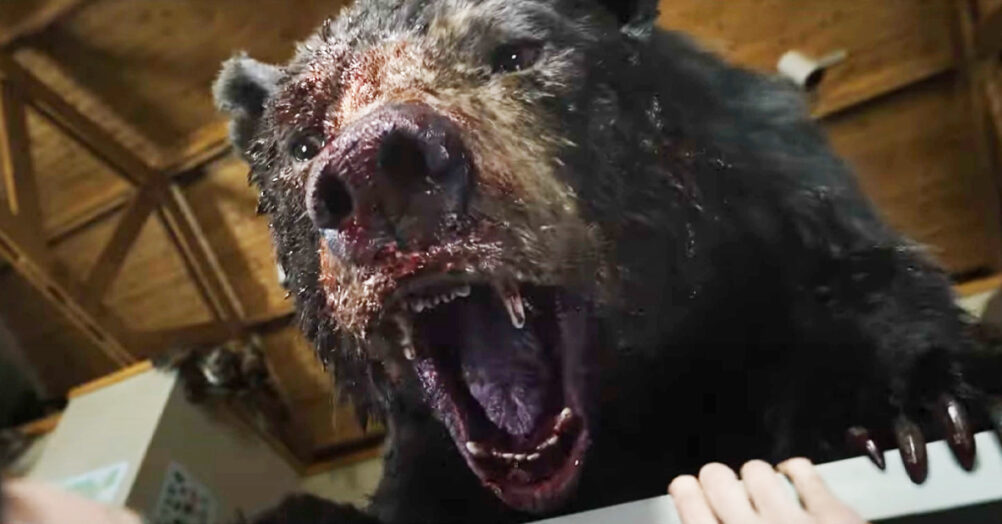

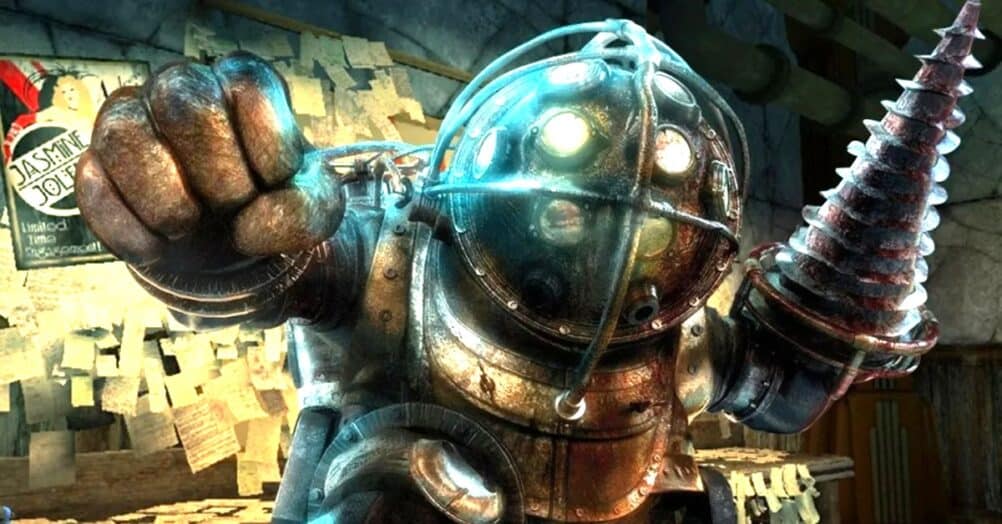
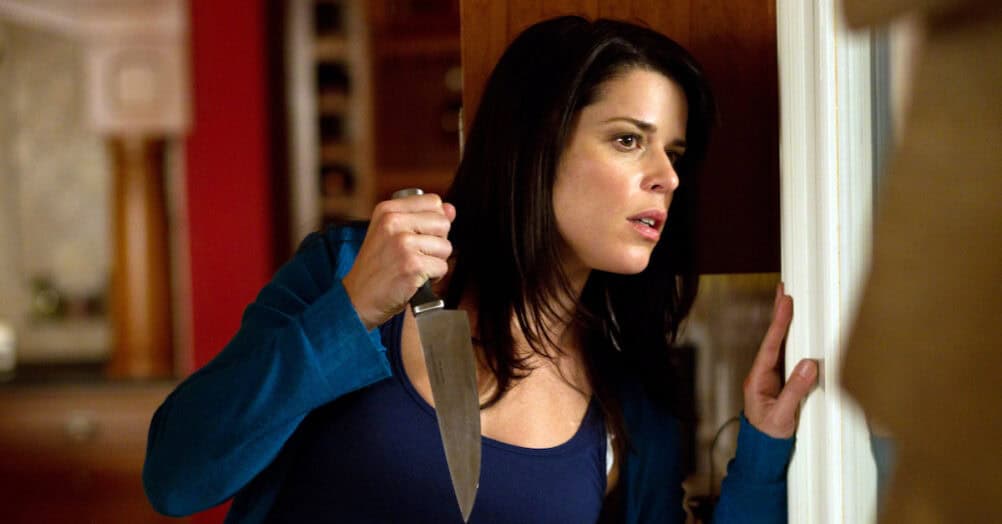


Follow the JOBLO MOVIE NETWORK
Follow us on YOUTUBE
Follow ARROW IN THE HEAD
Follow AITH on YOUTUBE